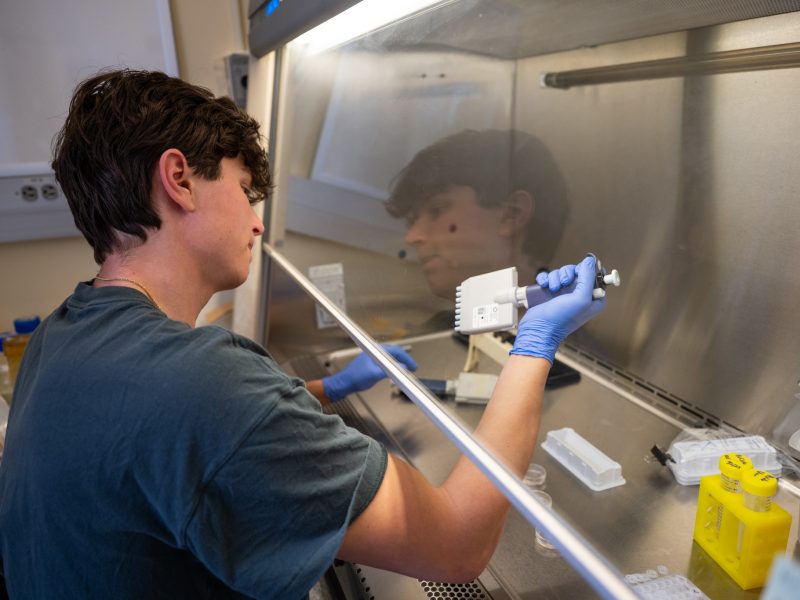For the second year in a row, a team of six graduate students from the University of Maryland won the national U.S. Environmental Protection Agency Campus RainWorks Challenge on Friday out of 77 teams from 29 states.
The project was part of LARC748: Advanced Special Topics Studio, a landscape architecture course for graduate students taught by plant sciences and landscape architecture professor Victoria Chanse, who advised the winning team. Three landscape architecture graduate students — Kathleen Hayes, George Sorvalis and Matt Zerfas — led the team, while environmental science and technology graduate students Emma Giese and Sharon Hartzell and civil engineering graduate student Jason Renkenberger served other roles in the project.
Facilities Management proposed multiple project ideas to the team, including the one the team chose, which includes a plan to install rain gardens around Lot 11b — located on Paint Branch Drive near the Field Hockey & Lacrosse Complex — to combat the stormwater runoff that flows directly into the Campus Creek and the Paint Branch Creek. The lot is paved to the edge of the creek.
The stormwater runoff would drain into the rain gardens, which would treat the polluted water before it goes into the creeks. Only after the water has gone through the entire system will it go into the creek.
Lot 11b, which is five acres, is all asphalt situated between a wetland on the campus, Campus Creek and Paint Branch Creek. When it rains, water running off the blacktop carries automobile pollution, and untreated water contributes to problems with the Anacostia River and the Chesapeake Bay, Sorvalis said.
Stormwater and nonpoint source pollution — pollution caused by rainfall moving through the ground and picking up natural and man-made pollutants — causes “a big problem in our region and all over our country,” Sorvalis said. “The fact that the University of Maryland is investigating and [leading] the way towards better water quality is something our nation needs and our water resources need.”
The idea for the rain gardens in Lot 11b “offered [the] greatest challenge and best opportunity,” he said.
In addition to the team’s project fixing a problem with one of the parking lots on the campus, it also has the potential to be applied more broadly to other similar areas.
“We’ve been building up on these lots, and it runs into the creek, so [the students were] wondering, ‘What can we do about this creek that we might be able to use other places?'” Chanse said.
Hayes said the initial response to the project idea was that it wasn’t particularly interesting, although the need to address the problem became clear.
“When [Facilities Management] pointed out this particular parking lot, everybody at first was kind of like, ‘It’s a parking lot. That seems not very interesting. It’s not a very sexy project,'” Hayes said.
However, she said the way the parking lot is now is “a disaster,” noting that, “If you could get [surface parking lots] to become engines for dealing with stormwater, that would be huge.”
Once the project is implemented — though Hayes said she doesn’t know when that will be — it won’t stop there. The team also hopes to continue researching through its implementation. The lot is designed as four quadrants of equal drainage size so that they can be used as experimental sites and then compared against one another.
“I think it’s just a testament to the students— they worked really hard,” Chanse said. “I’m just lucky because I have them, and this is their final studio.”


